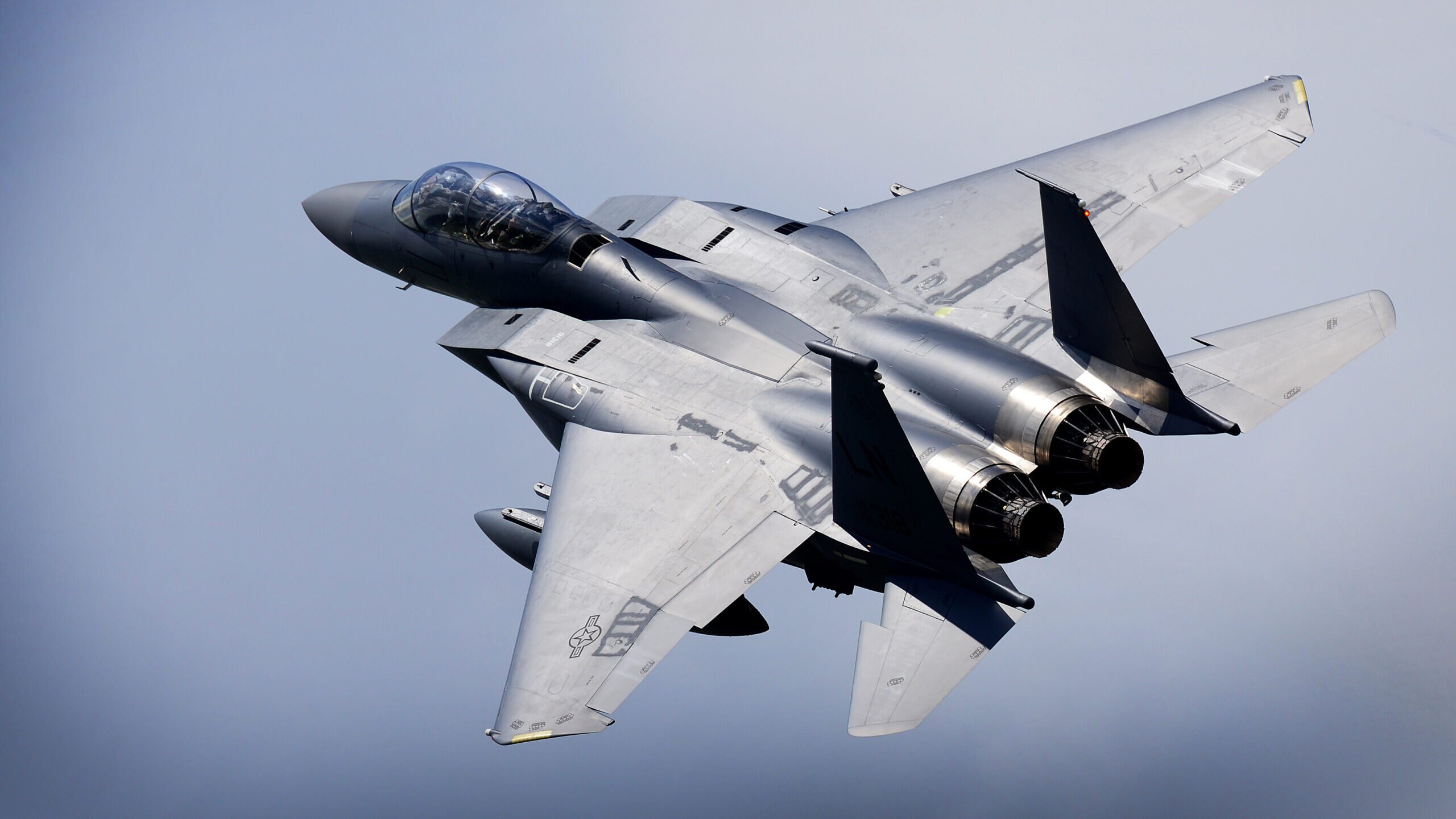
An F-15E Strike Eagle assigned to the 492nd Fighter Squadron flies over Royal Air Force Lakenheath, England, May 10. (U.S. Air Force photo/ Tech. Sgt. Matthew Plew)
TEL AVIV — The Israeli Ministry of Defense has officially requested 25 F-15 EX fighters from the US, according to industry sources, but the Israeli air force is already hoping to double the order.
An official Letter of Request (LOR) for the fighters was sent from the Israeli government to the US government last week, the sources said. Letters of request are the first step in the Foreign Military Sale process, after which details on numbers and pricing are negotiated.
The political instability in Israel in recent years forced Israelis to take part in five general elections in less than four years, delaying the official decision on the purchase of the advanced version of the F-15. In 2020, the Israeli government made a general decision to acquire additional F-35s and F-15s. But while the contract for the F-35 was signed, the one for the F-15s was not.
RELATED: European nations eyeing Rafael-made short-range ballistic missile defense systems
Since that time, however, the IAF expressed an urgent need for more F-15s that can be loaded with some types of weapon systems developed in Israel that are tailored to destroy “hardened” targets, such as Iranian nuclear sites.
A defense source told Breaking Defense that now that the LOR has been issued, the earliest deliveries of the F-15 EX are expected in 2028, but the Israeli government may ask the US to condense that timeline. Both the Israeli Ministry of Defense and the US Embassy in Jerusalem declined to comment for this report.
According to Boeing, the F15-EX “carries more weapons than any other fighter in its class, and can launch hypersonic weapons up to 22 feet long and weigh up to 7,000 pounds.”
The IAF wants 25 F-15 EX and in parallel to upgrade its 25 F-15 I variants to the same avionic configuration of the F-15 EX, except for the fly-by-wire system. The Israeli defense source said that budget limitations may affect the “scope” of the F-15 I planned upgrade. The IAF currently operates 50 F-15 A/B/C/D variants and 25 F-15 I.
When the IAF made a decision to buy more F-15s and F-35s, it was based on the assumption that in future combat scenarios targets will be protected by advanced air defense systems. This will require a first wave of F-35s to neutralize the air defense systems and then the F-15 “trucks” to follow with heavy loads of very advanced weapon systems, some which are in development.
In Israeli eyes, the new defense relations between Russia and Iran make the operational need for more F-15 urgent. This following reports that Moscow may sell its S-400 air defense systems to Iran that plans to deploy them to protect its nuclear sites.
The Israeli fleet of F-15s is essential not only to attack targets in Iran but also to stop accurate rocket launches by Hezbollah, Iran’s proxy force in Lebanon.
The general staff of the Israeli defense forces has prepared a target bank that will be heavily attacked if the Hezbollah starts launching rockets as a result of an Israeli action or as a “supportive act” if Israel attacks the Iranian nuclear sites, as Breaking Defense has reported.
Before Israeli chief of general staff Lt. General Aviv Kochavi ended his term on Jan. 16, said in interviews that if a new war breaks out with Hezbollah, Israel would unleash “waves of firepower” that wouuld send Lebanon 50 years back in time.
Navy jet trainer fleet operations remain paused after engine mishap
One week after the incident, a Navy spokesperson says the service is continuing to assess the fleet’s ability to safely resume flight.


























